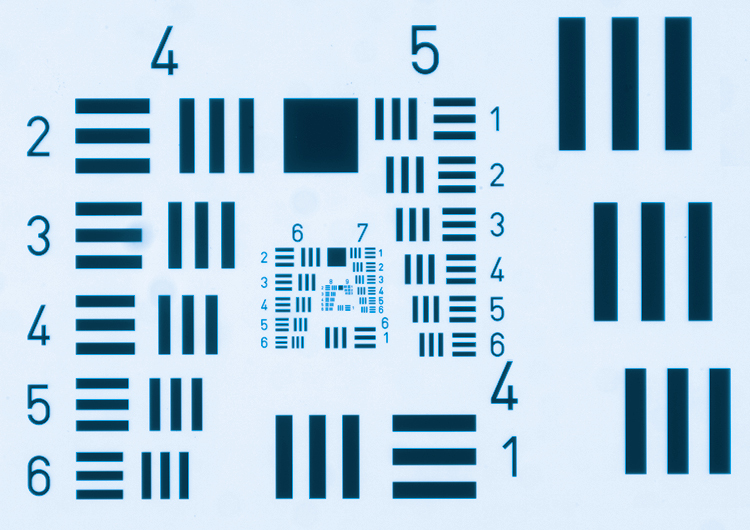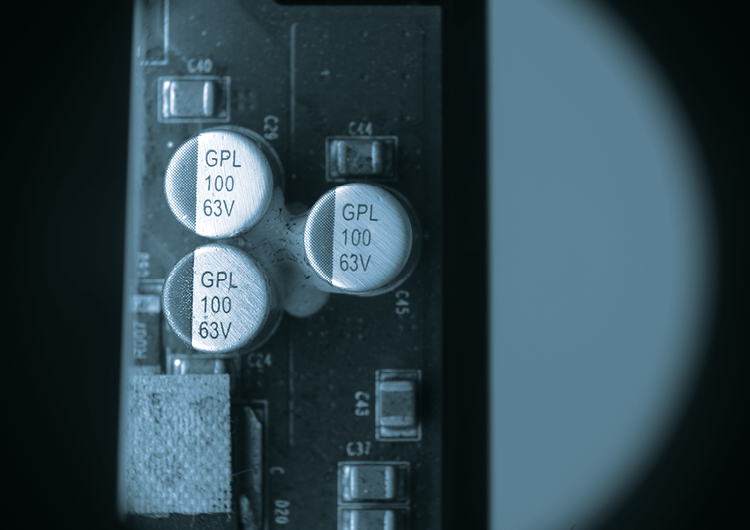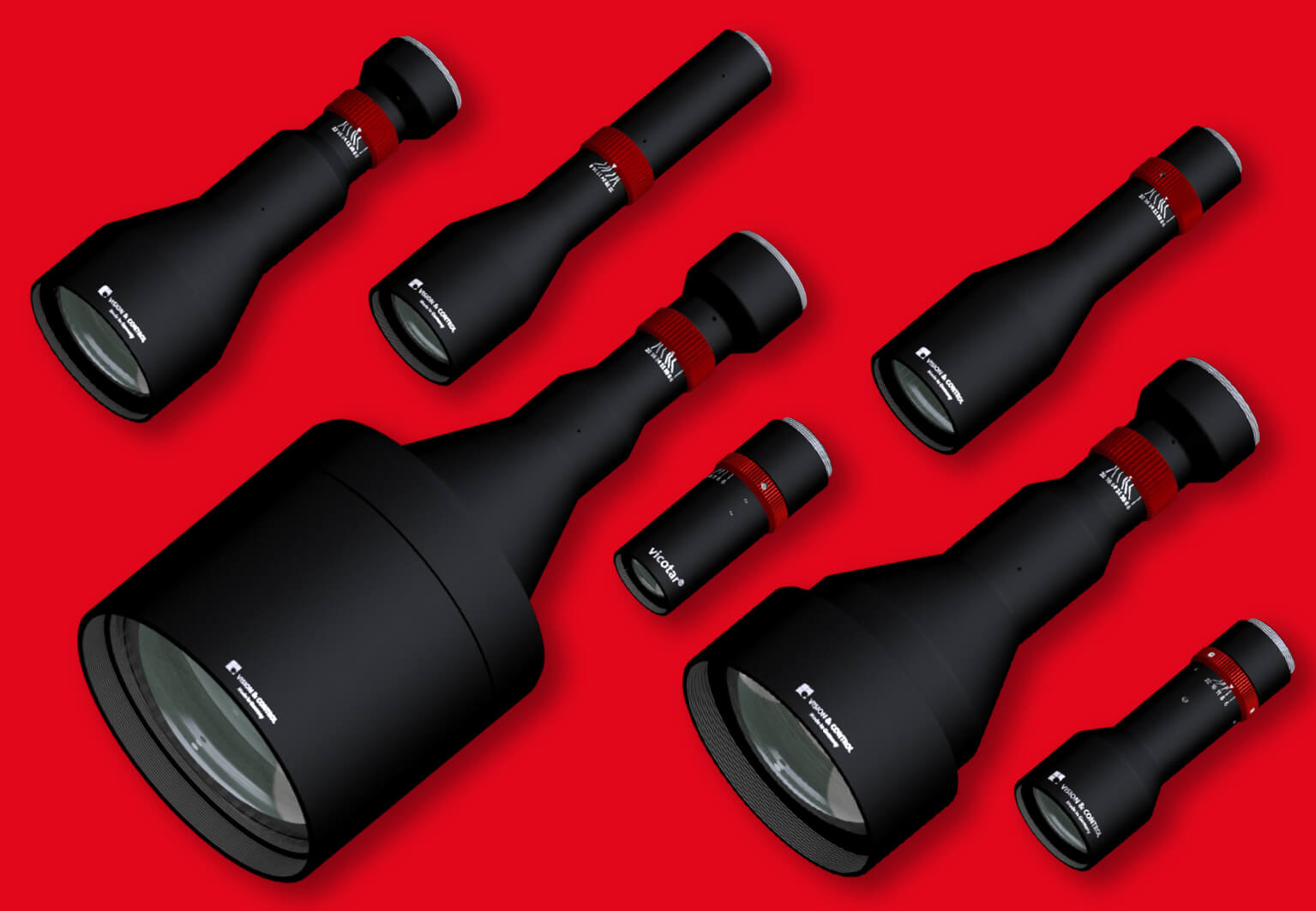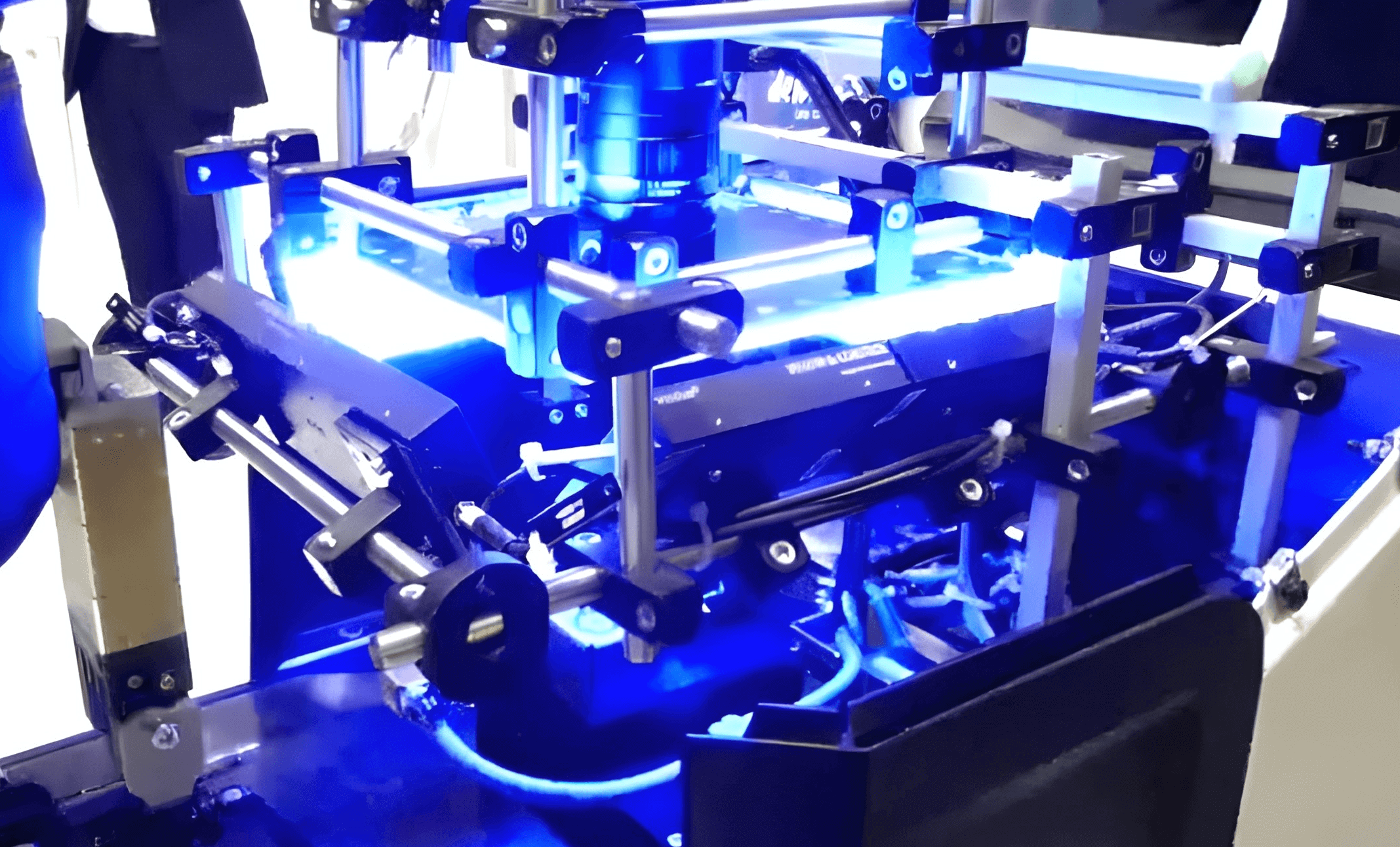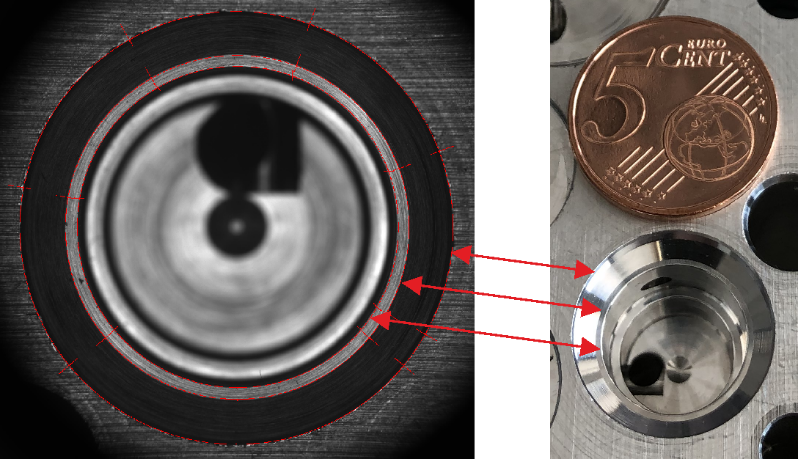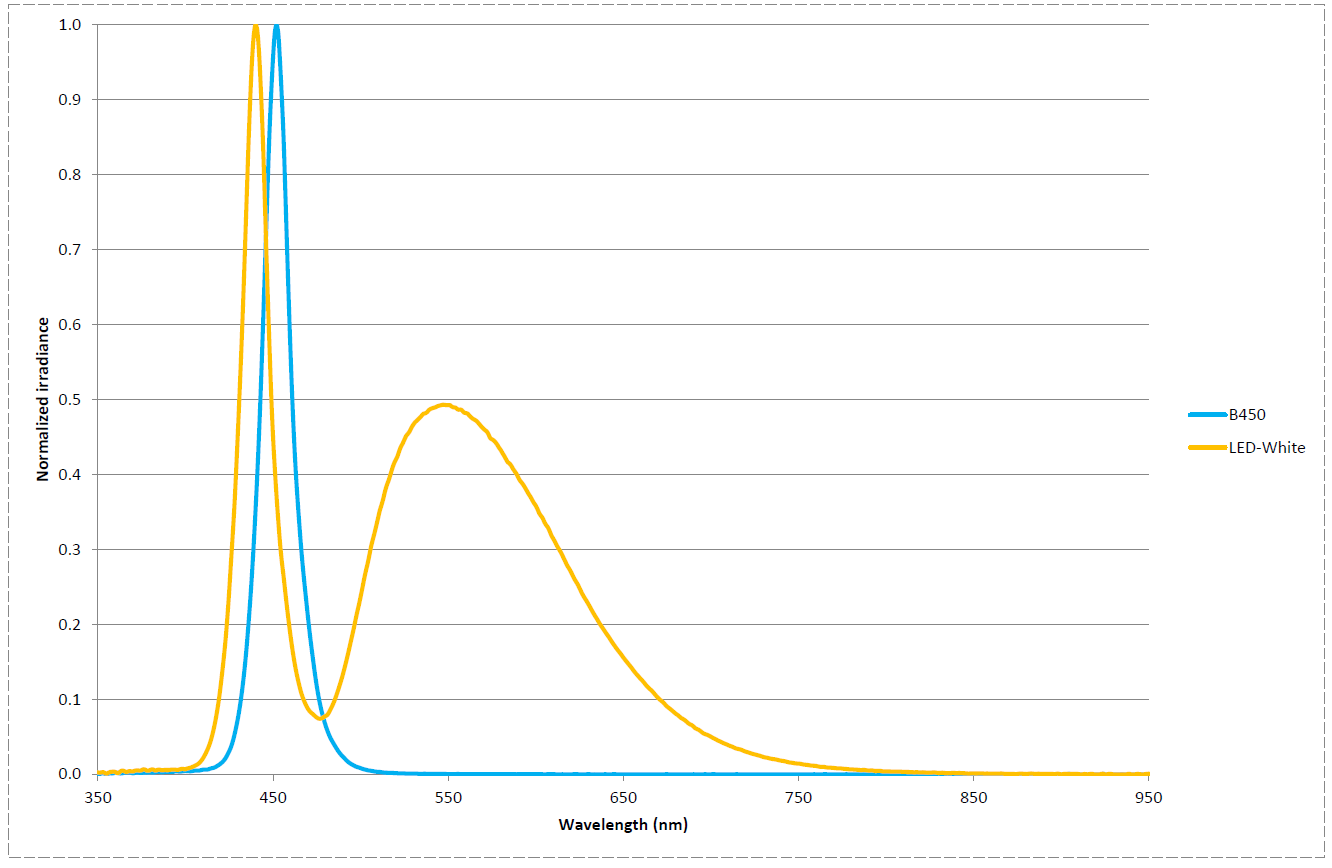Practically double the resolution of conventional imaging
With the new BLUE Vision lenses, Vision & Control now provides telecentric measuring lenses whose colour correction has been extended far into the blue range.
For your depth-extended and/or finely structured measurement objects, our telecentric objectives of the BLUE Vision series in combination with the matching blue luminous vicolux® lighting offer maximum resolution with maximum depth of field for imaging your measurement object!
vicotar® BLUE Vision telecentric lenses
- Special colour correction for the blue spectrum - this enables almost doubling of image sharpness compared to the use of red light
- Can also be used for the entire visible spectrum (400-900 nm)
- Possess diffraction-limited imaging quality
- available in "variable aperture" and "shakeproof" (with fixed aperture) versions
- Fixed aperture - for special requirements with vibrations or movements - e.g. for robot applications
- Variable aperture - to adjust resolution and depth of field optimally for the application
⇒ To the product catalogue telecentric lenses
vicolux® BLUE Vision lighting
- Vision & Control lighting systems are generally available in blue, white, red, green and IR.
- Especially the lighting in the blue range (approx. 450 nm) have a very high efficiency of over 70%.
- Therefore, they offer sufficient power reserves both in continuous light and in flash mode.
- At the same time, the high efficiency enables good heat management of the entire system.
- The highest precision for metrology applications is achieved in combination with telecentric lighting.
In industrial image processing, optical imaging is expected to provide high image sharpness with the greatest possible depth of field at the same time.
However, these are two parameters that are partly mutually exclusive and often require compromises. If the lens is stopped down to achieve the necessary depth of field, the image becomes increasingly blurred due to diffraction.
The depth of field (colloquially also depth of field) of a lens depends only on its magnification and the aperture set. Small image scales and large f-numbers mean large depth of field, small f-numbers result in high resolution. Therefore:
- Do I need a large depth of field → small sensor with a small magnification?
- Do I need high resolution with a flat object → large sensor with large magnification ratio
Within the visible spectrum, monochromatic image examinations with blue light are most effective. The lenses of our vicotar® BLUE Vision series are specially designed for this spectral range. - Here they deliver maximum resolution with the greatest possible depth of field.
Resolution and depth of field are two optical parameters that work against each other. The more a lens is stopped down, the more blurred its image becomes due to the increasing diffraction and consequently the less details can be resolved. Industrial image processing, however, demands both: maximum resolution with the greatest possible depth of field. The newly developed lens series "BLUE Vision" takes this demand into account. It takes advantage of the fact that the smaller the wavelength of the light used, the smaller the diffraction effects. This is reflected in the resolution in the opposite way: If the wavelength is halved, the resolution is doubled.
For example, if a lens at f-number 10 produces a diffraction disc of 8 micrometres radius with red light (650nm), then with blue light (450nm) it is only 5.5 micrometres, so the blur is almost a third less, which corresponds to the ratio of the wavelengths.
In addition to the fact that blue light enables much more precise image examinations, another argument in favour of using this light colour is that these light-emitting diodes have the highest efficiency compared to LEDs in other spectral ranges. They reach values of up to 70%. In contrast, the efficiency of green LEDs is only about 20%. Red LEDs are in the range of 40%. Thus, inspection with blue light is accompanied by reduced energy consumption. This is reflected, for example, in shorter exposure times or lower heat generation.
vicolux® illuminators from Vision & Control are designed for these short wavelengths of 450 nm and offer good illumination even under difficult conditions due to their large power reserve (both in continuous light and flash mode).
Modern camera sensors have the maximum sensitivity in the green spectral range, it drops somewhat in the red as well as in the blue range. Our picture shows the quantum efficiency of the frequently used Sony sensor IMX304 as an example.
 |
You can see that the sensitivity to blue light is at least equal to the red sensitivity.

The resolution of a microscope depends on the wavelength λ and the numerical aperture A of the objective.
It is calculated as 0.61 λ / A. Conventional microscope objectives are available up to an aperture of 0.65, resulting in a resolution of approx. 400 nm for blue light. The maximum resolution thus corresponds approximately to the wavelength used.
Electron microscope (0.1 nm - theoretically even up to approx. 0.004 nm)
The BLUE Vision lens series are perfectly matched to the overall portfolio of Vision & Control GmbH.
Lens holders, optical colour filters, UV blocking filters, tuning rings and deflection mirrors are available as accessories.
Depending on the application, BLUE Vision lenses can be combined with telecentric illuminators, ring lights, area lights or single-mirror illuminators.


